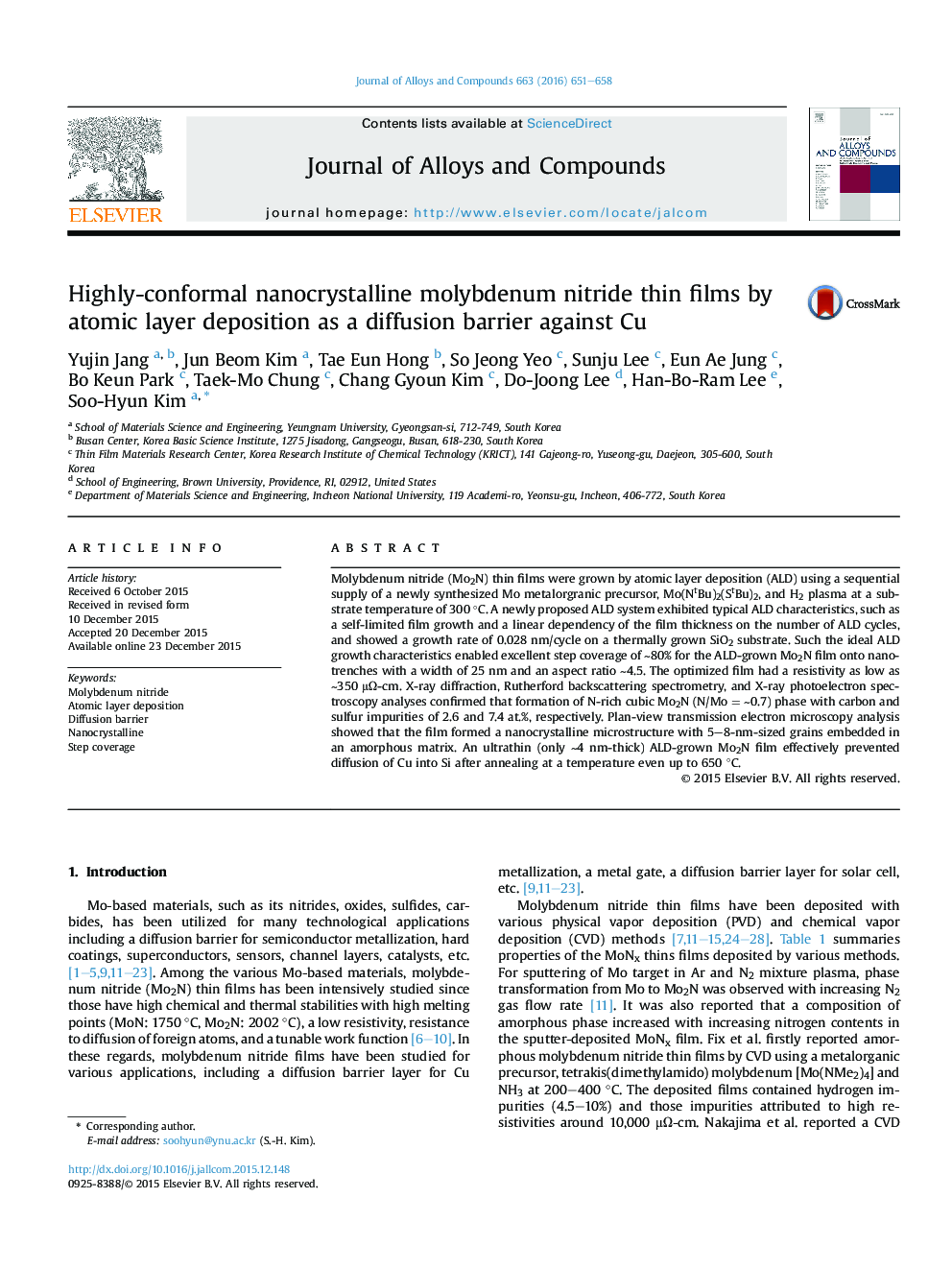| Article ID | Journal | Published Year | Pages | File Type |
|---|---|---|---|---|
| 1606981 | Journal of Alloys and Compounds | 2016 | 8 Pages |
•Nanocrystalline cubic γ-Mo2N thin films were deposited by atomic layer deposition (ALD).•A growth rate was 0.028 nm/cycle at the deposition temperature of 300 °C.•The step coverage was ∼80% at 25 nm width trench (AR: ∼4.5).•4 nm-thick ALD- Mo2N film prevented the diffusion of Cu into Si up to 650 °C.
Molybdenum nitride (Mo2N) thin films were grown by atomic layer deposition (ALD) using a sequential supply of a newly synthesized Mo metalorgranic precursor, Mo(NtBu)2(StBu)2, and H2 plasma at a substrate temperature of 300 °C. A newly proposed ALD system exhibited typical ALD characteristics, such as a self-limited film growth and a linear dependency of the film thickness on the number of ALD cycles, and showed a growth rate of 0.028 nm/cycle on a thermally grown SiO2 substrate. Such the ideal ALD growth characteristics enabled excellent step coverage of ∼80% for the ALD-grown Mo2N film onto nano-trenches with a width of 25 nm and an aspect ratio ∼4.5. The optimized film had a resistivity as low as ∼350 μΩ-cm. X-ray diffraction, Rutherford backscattering spectrometry, and X-ray photoelectron spectroscopy analyses confirmed that formation of N-rich cubic Mo2N (N/Mo = ∼0.7) phase with carbon and sulfur impurities of 2.6 and 7.4 at.%, respectively. Plan-view transmission electron microscopy analysis showed that the film formed a nanocrystalline microstructure with 5–8-nm-sized grains embedded in an amorphous matrix. An ultrathin (only ∼4 nm-thick) ALD-grown Mo2N film effectively prevented diffusion of Cu into Si after annealing at a temperature even up to 650 °C.
Graphical abstractFigure optionsDownload full-size imageDownload as PowerPoint slide
